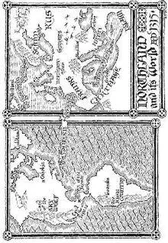We have to remember though that by the time Jake visits them, the Omaticaya are already a people transformed, if not traumatised, by their contact with humanity. They have had to coin names for humans and their artefacts: a Scorpion gunship is kunsip . Attempts by RDA to negotiate treaties with the Na’vi have stalled because of fundamental cultural differences; the Na’vi derive all their “rights” from Eywa, who protects all, and so to them there is nothing to negotiate. And the interaction of Na’vi with humans has grown more violent with the years.
Maybe the behaviour of the Omaticaya is already atypical of the Na’vi on the rest of Pandora. In the same way the horseriding culture of the plains Indians of North America, which has provided later generations with a classic image of “unspoilt” pre-contact peoples, was at the time of the Old West only a few hundred years old. Until the European immigrants imported them, there had been no horses in North America since they went extinct many thousands of years earlier.
So the Omaticaya may not be “pure” Na’vi. Still, contact with them shows that they behave like us.
And, not only that, the Na’vi look remarkably like us.
Why do the Na’vi have a mere four limbs? Most Pandoran animals have six. And indeed, why only one neural queue rather than two, and only one set of eyes, and no supplementary breathing vents?
Do the Na’vi look more human than they’ve a right to?
In Chapter 23I noted that the four-limbed body plan that we share with every other vertebrate land animal (not to mention the birds, the flying reptiles of the past and creatures that have returned to the water such as the whales) is a relic of that common wheezing four-limbed fish-grandmother who first hauled herself out of the water many millions of years ago. On Pandora, judging by what we see of the six limbs of animals from the direhorse to the leonopteryx, that ur-mother must surely have been six-legged herself. The Na’vi aren’t unique with their four limbs; the banshee too are quadrupeds, but it’s clearly highly unusual.
There is an onscreen hint of how the Na’vi’s four-limbedness might have come about. The prolemuris, a monkey-like tree-climbing creature, appears to be the closest animal to the Na’vi in form. It too has just one neural whip, no vents, one set of eyes. And its arms are, if not quite like the Na’vi’s, not like the limbs of other creatures either. It has two sets of forearms, but its upper arms appear to have fused, so that the limbs branch from the elbows. Maybe this is a glimpse of the evolutionary trajectory the Na’vi have followed. But we have to remember that the protolemuris is as fully evolved a creature as the Na’vi, and its peculiar fused arms serve a purpose in the particular way it lives its life; its arms help it with mobility as it clambers through the trees. In the same way, while chimps may holds clues as to our own evolutionary history, a living chimp is not an incompletely evolved human—it is a fully evolved chimp.
Our humanoid form converges with the Na’vi’s in a number of other ways, many of them quite subtle. They have reasonably human-looking sets of teeth, for example. Our teeth have evolved in response to the mixed diet we omnivores have to cope with: canines for killing prey and tearing meat, molars for grinding vegetation. The Na’vi evidently have a similarly wide food base. And they needn’t have had teeth at all. Teeth seem to have evolved from the scales of the ancestral fish that crawled out of the sea, but teeth themselves are surely only one engineering solution to the problem of crushing and tearing food prior to digestion.
And the Na’vi have red blood, like ours. You can see this when avatar-Jake punches out warrior Tsu’tey. Why is blood red? The purpose of blood is to deliver essentials such as oxygen and nutrients to the body’s cells, and take away waste. In vertebrates like us, it consists of blood cells suspended in a liquid called blood plasma, which is mostly water with dissolved proteins and other products. The majority of the blood cells in your body are red; the other sort, white blood cells, includes platelets which help your blood to clot. Red blood cells contain haemoglobin, an iron-containing protein. This bonds chemically to oxygen to transport it around the body—and when haemoglobin is oxygenated, the blood is bright red.
As the Na’vi are functioning in an oxygen-rich atmosphere they must need some equivalent of haemoglobin in their blood to transport the oxygen around their bodies, and indeed the active biochemical in their bodies is an iron-based compound like haemoglobin. But it didn’t have to be haemoglobin or anything like it; some molluscs use a molecule called haemocyanin instead.
Of course there are evident differences between Na’vi and human, including the Na’vi’s senses. Na’vi eyes are four times larger than a human’s, and much more sensitive. They can see beyond the human range, into the near infrared. This would be a great help to the Na’vi in their dimly lit bioluminescent forest. A Na’vi’s ears, meanwhile, are mobile, like a cat’s. This would help sense the direction a noise is coming from, another adaptation useful for forest hunters. But Na’vi ears are expressive as well as functional. They move in response to what is said, and emotions expressed. Na’vi ears aren’t just hearingcups; they are part of Na’vi faces.
However the single biggest bodily difference that Jake notices, when he first wakes up in his avatar body, is his tail—and he does a good deal of damage with it before he learns to control it. The Na’vi use their tails for balance and direction changes when running, and to grip tree limbs and vines when climbing.
Why should the Na’vi have tails, and humans not? A tail is certainly useful if you’re planning to live up a tree. All New World monkeys have tails, and in some, like the spider monkeys, it is prehensile, like a Na’vi’s; that is, it can be used like an extra arm. Monkeys can hang from their tails alone, or from any combination of arms, legs and tail.
Our deepest primate ancestors had tails too, but we, and our ape cousins, lost our tails over evolutionary time. Body features which are not used tend to shrink or disappear, even eyes, such as among fish that live in unbroken dark. There are plenty of other creatures who have lost their tails, such as moles, hedgehogs, bears and sloths.
However, the biologists don’t understand quite why we lost our tails. It presumably has something to do with the way we and our cousins have learned to walk on two feet. Monkeys which are very active in tall trees, running along the branches, jumping and swinging, use their tails a lot, including for balance. But creatures that move slowly in the lower branches, like sloths and koalas, are tailless. In Borneo the long-tailed macaque lives high in the trees—and has a long tail, as the name indicates—while its close cousin the pig-tailed macaque lives on the ground, and has a short tail.
With apes, the picture is more complex, and perhaps has something to do with walking on two legs. Chimps after all do climb trees, and so do gibbons, and neither has a tail. But these creatures are often seen to walk bipedally, and perhaps that has led to natural selection against tails. With us the selection pressure must have been more extreme. After our ancestors split from the chimpanzees they became creatures like upright chimps, australopithecines, clinging to the forest edge yet foraging out onto the savannah, gradually becoming more and more committed to bipedalism. Goodbye tail.
As for the Na’vi, their evolutionary trajectory has clearly been different. They have stayed closer to their forest. Compared to us they are terrifically adept in the trees, good at running along narrow branches, at swinging like Tarzan, at leaping huge distances. No wonder they have retained their tails.
Читать дальше










